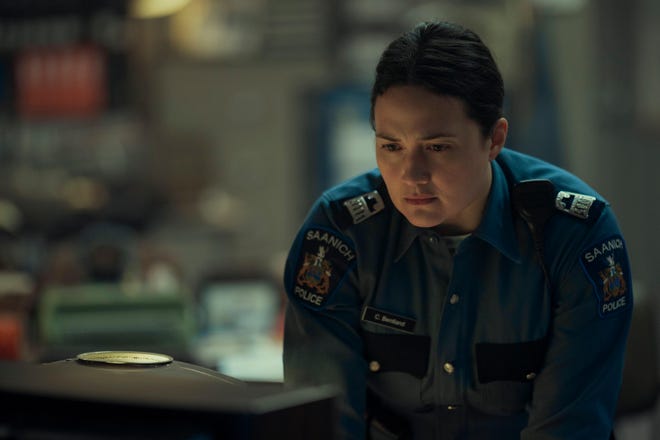The kids are definitely not all right.
In Hulu’s “Under the Bridge,” based on the 2005 true-crime novel by Rebecca Godfrey, the innocence of childhood is lost amid violence, lies and tragedy. It’s the story of Reena Virk, a 14-year-old Canadian girl who was murdered in 1997 by her peers, and a harrowing narrative of children hurting each other, committing the ultimate act of cruelty and bloodshed for reasons we’ll never really know.
In its heavily fictionalized retelling, “Under the Bridge” (streaming Thursdays, ★★ out of four) starts as an emotional, affecting drama that avoids most of the clichés of true crime. But it slowly falls apart in a second half that raises more questions than it answers and opens too many new threads while leaving most of them hanging. While its eight episodes are clearly aiming for lofty, vital storytelling, it’s only the first four that manage to move you. And it’s a shame because so much of this story demands to be heard.
Reena (Vritika Gupta) is an angst-ridden, troubled teenager who doesn’t fit in near her British Columbia town and hates her Jehovah’s Witness mother Suman (Archie Panjabi). Drawn to a group of LA street gang-obsessed girls, Reena eventually winds up at an unfriendly party, where she is assaulted by a group of teens under a bridge. But while she walks away from that beating, her murdered body is eventually found days later.
Unraveling her case is Cam Bentland (Lily Gladstone), a local cop who immediately suspects Reena’s so-called friends Josephine (Chloe Guidry), Dusty (Aiyana Goodfellow) and Kelly (Izzy G.). Writer Rebecca (Riley Keough), is also investigating, trying to befriend the teens to learn their secrets, and is eventually drawn to homeless teen Warren (Javon “Wanna” Walton), whose involvement in Reena’s death isn’t initially clear.

Told out of chronological order (a storytelling device in contemporary TV drama that has crossed the line from trend to tired trope), “Bridge” tells the story of the murder on multiple fronts. There’s Cam and Rebecca, old friends who are often at odds as they’re drawn to prosecute and protect different actors in the case; the teens after Reena’s death, closing ranks and living in various states of denial and guilt; and Reena in flashbacks, who’s ostracized, because of race or body type or both.
Although Gladstone and Keough are competent and appealing, Cam and Rebecca are the least interesting characters in the story, and when you know the facts of the real case, it’s easy to see why. Cam is a composite character representing all of law enforcement, and the real Godfrey was not actively involved in the case as it happened. Both women feel tacked on to the better, meatier story about the capacity of violence in kids at such a young age.
Despite the tantalizing question of why 15-year-olds would commit such a heinous crime, it’s impossible to discover what the show is trying to say about adolescence or violence or race. The scripts of creator Quinn Shepherd (“Not Okay”) feel half-formed. Warren is severely underdeveloped at the start, even as he becomes a pivotal character by the end. Cam and Rebecca have tragic backstories with little connection to their actions in the present.
All the fault lines start to appear as the series moves into its second half. Whether hampered by the balancing act between fictionalization and the real crime or by the age-old quest to find a good ending to a story, the writers crafted four final episodes that are distinctly less engrossing, lack depth and reveal weaker characters and performances.

True crime is a crowded genre with so many cookie-cutter stories exploiting tragedies for voyeuristic films and series. To its credit, “Bridge” does its best to honor Reena and crafts a compelling story when it focuses more on her than her killers. But that’s not enough to make up for the tackier, aimless later episodes.
As the title cards in the final moments reveal what happened to all the people involved in Reena’s death, we’re reminded we don’t always get a perfect ending to our stories in real life. But that doesn’t always happen in fictional versions of them, either.





